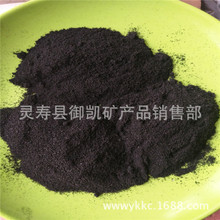Coastal wastewater treatment plants may be a nasty but necessary way to handle the effluent from our cities, but a new study by Stanford University indicates that they could also double as power plants to make them energy independent and carbon neutral. By mixing fresh water from the plants with seawater, the researchers say they have the potential to recover 18 gigawatts of electricity worldwide.
Watching a river flow into the sea may seem like yet another bit of variety in nature's rich tapestry, but it also represents a tremendous energy potential. Most people are aware of how rivers can be dammed and their flow controlled to turn turbines and generate useful power, but the simple mixing of salt and freshwater represents a global energy potential of two terawatts.
This is because when fresh and saltwater mix, it produces what is called a salinity gradient. In the case of wastewater coming out of a treatment plant, the discharge contains 20 times less salt than the seawater it mixes with. Skipping over a lot of chemical details, what this means is that every cubic meter of freshwater can theoretically produce 0.65 kW/h of energy.
That's not a lot, but according to the Stanford team led by Kristian Dubrawski, a postdoctoral scholar in civil and environmental engineering, this "blue energy" could have an important local application for wastewater plants.
When situated on coasts, such plants continually discharge fresh water into the sea after treatment, but running these plants is energy intensive and takes up three percent of the electrical power output in the US alone. This would be bad enough, but wastewater plants need to operate around the clock and having one knocked out by power shortage can have some nasty consequences, such as releasing untreated waste into the water system.
The idea of using the salinity gradient as a means of generating "blue energy" isn't new, but the Stanford team says that its approach is the first that doesn't rely on things like pressure or osmosis. Instead, it turns the fresh and salt water into a battery where the two are washed over electrodes made of Prussian Blue (costing US$1 per kg) and polypyrrole ($3 per kg).
As they do so, they exchange sodium and chloride ions, creating an electric current. When the salt water comes in, the reaction goes in one direction and so does the current. Fresh water reverses both. This means that the system works constantly with no energy input to keep it going.
Stanford says that the electrodes are relatively robust thanks, in part, to a coating of sulfosuccinic acid, as well as having no moving parts. In tests, a prototype at the Palo Alto Regional Water Quality Control Plant near Half Moon Bay, California, went through 180 cycles while maintaining 97 percent effectiveness, though the power output is still low. However, if it could be scaled up by using multiple batteries, it could make coastal wastewater plants energy self-sufficient with surplus power going to the grid or towards desalination.
"It is a scientifically elegant solution to a complex problem," says Dubrawski. "It needs to be tested at scale, and it doesn't address the challenge of tapping blue energy at the global scale – rivers running into the ocean – but it is a good starting point that could spur these advances."
The research was published in ACS Omega.
Source: Stanford University







